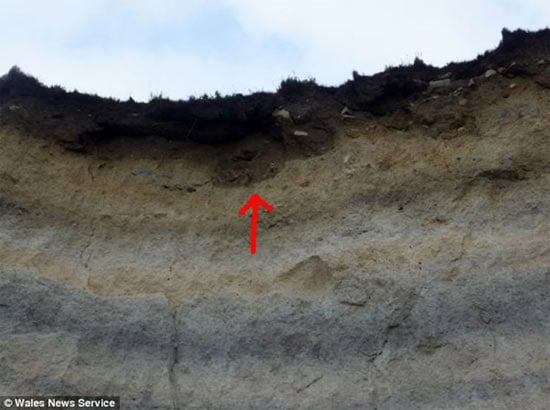The thigh bones of a medieval monk were exposed in a cliff face by a spate of bad weather along the British coastline. A beach walker was surprised to see the monk’s leg bones sticking out of the cliff in Monknash, South Wales, which was once a burial ground in the Middle Ages.
Mandy Ewington was strolling along the seashore when the spotted the remains of the monk. She sent a photo to leading coastal archaeologist Karl-James Langford, who confirmed the finding.

“You can clear see a grave has been eroded into the sea,” said Mr Langford. “What is fascinating is you can see the two femurs being slowly revealed as the cliffs are eroded away.”
The bones belong to a male in his late 20s who was in good health. He is believed to have been a member of the Cistercian monks who had a community and burial ground in the area from 1129 to 1535 AD. The Cwm Nash Burial Ground is listed by the Royal Commission on the Ancient and Historical Monuments of Wales as an ‘unofficial burial ground used by parishioners of Monknash.

A photo showing the monk’s remains high up on the cliff face. Photo credit: Wales News Service
“I would say they belong to a monk from the 1200s – due to previous archaeological digs in the past, the depth of the bones in the cliff and the history of the area,” said Mr Langford. “He would likely be buried with nothing except two shroud rings which would have held his burial shroud in place at the head and feet.”
Storms have caused huge swathes of the British coastline to collapse with archaeological sites rapidly being revealed and lost to the sea. Over the last 2,000 years, about 1km of the coast line has been lost, taking with it burial grounds, hill forts, and whole settlements.
“It’s like watching archaeology going like the pages of a book and the history is being revealed with every turn of the page,” said Mr Langford.